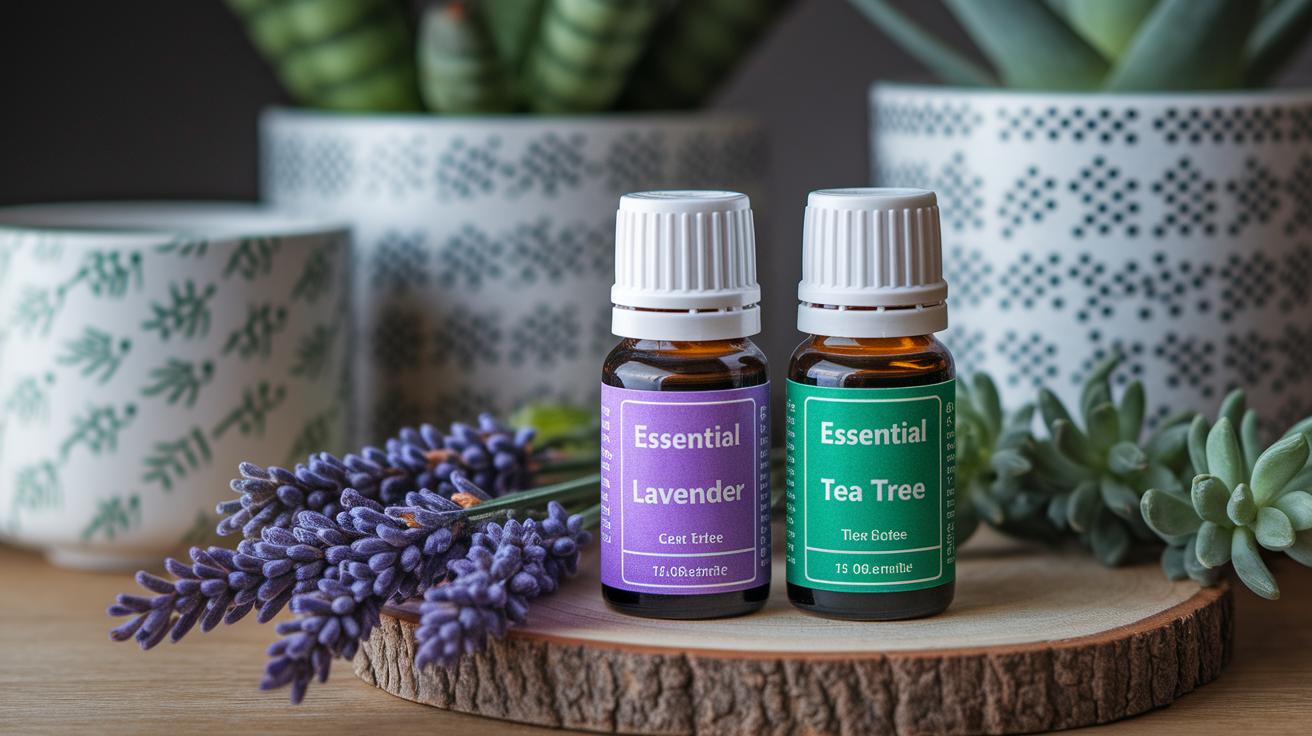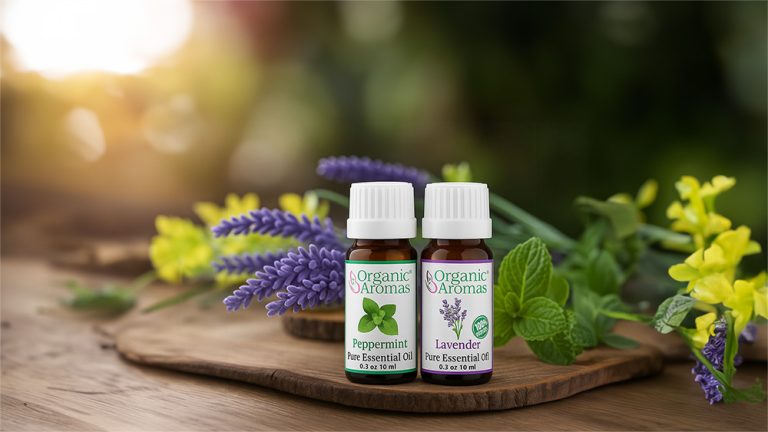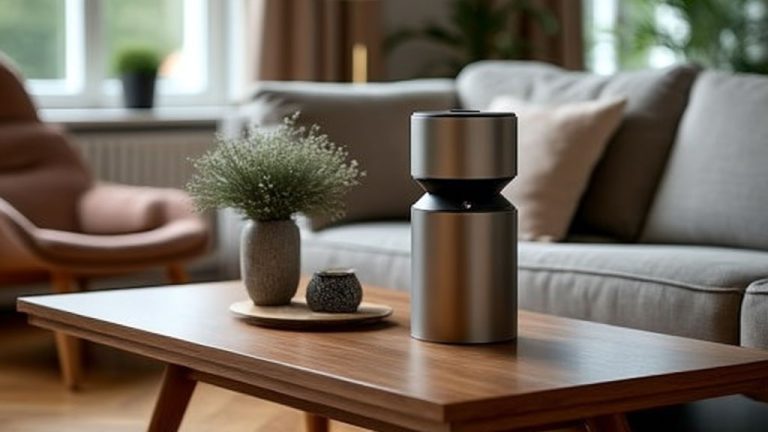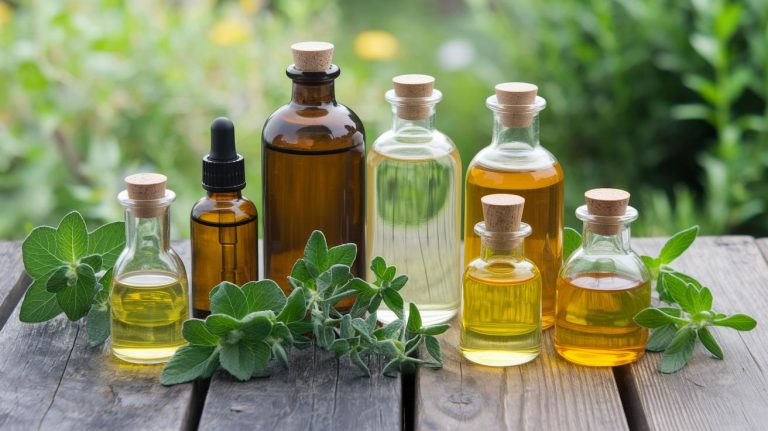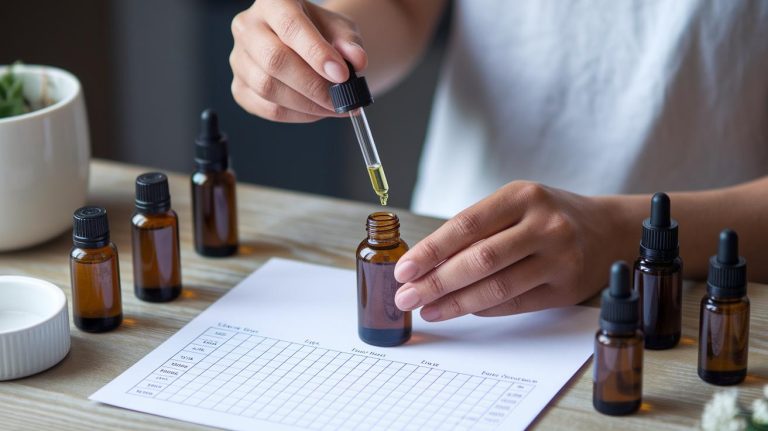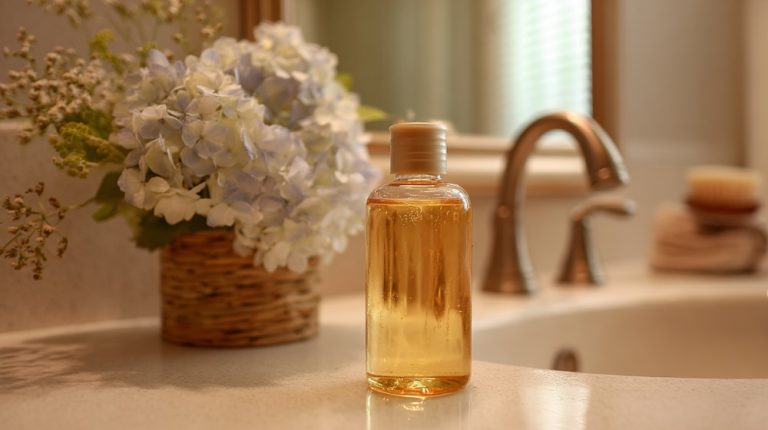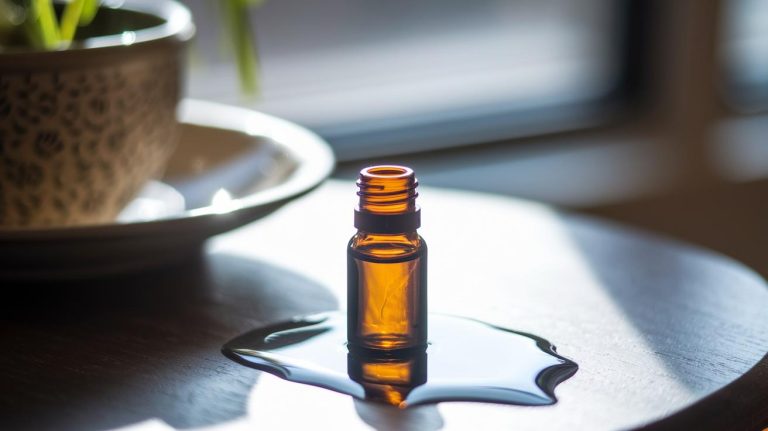5 skin�safe essential oils That Soothe and Protect
Ever wondered if a few drops of Exquisite® essential oil (pure plant extract) could calm redness and build a gentle skin shield?
It almost feels too good to be true, um, you’ve probably tried thick creams packed with stiff chemicals.
But Organic Aromas skin-safe oils carry the soft murmur of lavender fields and chamomile gardens right into your room.
They ease inflammation, lock in moisture, and shield your skin without any stiff chemicals.
Next, we’ll explore five nurturing oils to balance every skin type so you can glow with confidence.
Top Skin-Safe Essential Oils and Their Benefits for Every Skin Type

Have you ever noticed how a soft mist of oil can change the feel of your skin? Skin-safe essential oils can soothe, protect, and balance every complexion. They carry natural benefits straight from plants, with no harsh chemicals. Let’s explore the best picks for your skin type.
Normal Skin
• Geranium oil for balance: helps regulate sebum (natural skin oil) so your face feels neither dry nor oily.
• Lavender oil for calm: gently soothes sensitive areas and locks in moisture.
• Neroli oil for even tone: eases redness, evens skin color, and leaves a fresh floral aroma.
Dry Skin
• Roman and German chamomile oil for relief: anti-inflammatory (calms redness) and softens rough patches.
• Rose oil for hydration: deeply nourishing and helps skin hold onto moisture.
• Frankincense oil for anti-aging (fights fine lines): firms skin and supports cell turnover.
Sensitive Skin
• Rose absolute for gentle care: anti-inflammatory (soothes irritation) with a soft, sweet scent.
• Chamomile oil for cooling: azulene (a natural pigment) eases heat and redness.
• Lavender oil for ultra-mild comfort: perfect even on cheeks that flare up.
Mature Skin
• Frankincense oil for firming: minimizes fine lines and encourages new cell growth.
• Jasmine sambac oil for bounce: boosts elasticity and lifts your mood with its warm, sweet scent.
• Palmarosa oil for balance: regenerates skin and helps hold moisture evenly.
Oily or Acne-Prone Skin
• Tea tree oil for blemish defense: powerful antimicrobial (fights acne-causing bacteria).
• Bergaptene-free lemon oil for astringent care: tightens pores without risk of sun sensitivity.
• Cypress oil for tone: shrinks pores and reduces excess shine.
Scars & Pigmentation
• Helichrysum oil for repair: supports tissue repair and softens old scars.
• Lavender oil for faster healing: calms skin and speeds up recovery.
• Turmeric oil for brightening: evens skin tone and offers antioxidant (protects from damage).
Here’s a simple ritual to layer benefits and boost your glow:
- Add two drops of rose oil and two drops of frankincense oil into a teaspoon of jojoba oil (carrier oil that dilutes essential oils).
- Gently massage onto clean skin for one minute.
- Breathe in the light floral mist and let your skin drink in the goodness.
Always start with a patch test. And remember, these oils are organically sourced and cruelty-free, so you can feel good about what you’re putting on your skin. Breathe. Relax. Glow.
Safe Dilution Ratios for Skin-Safe Essential Oils and Carrier Options
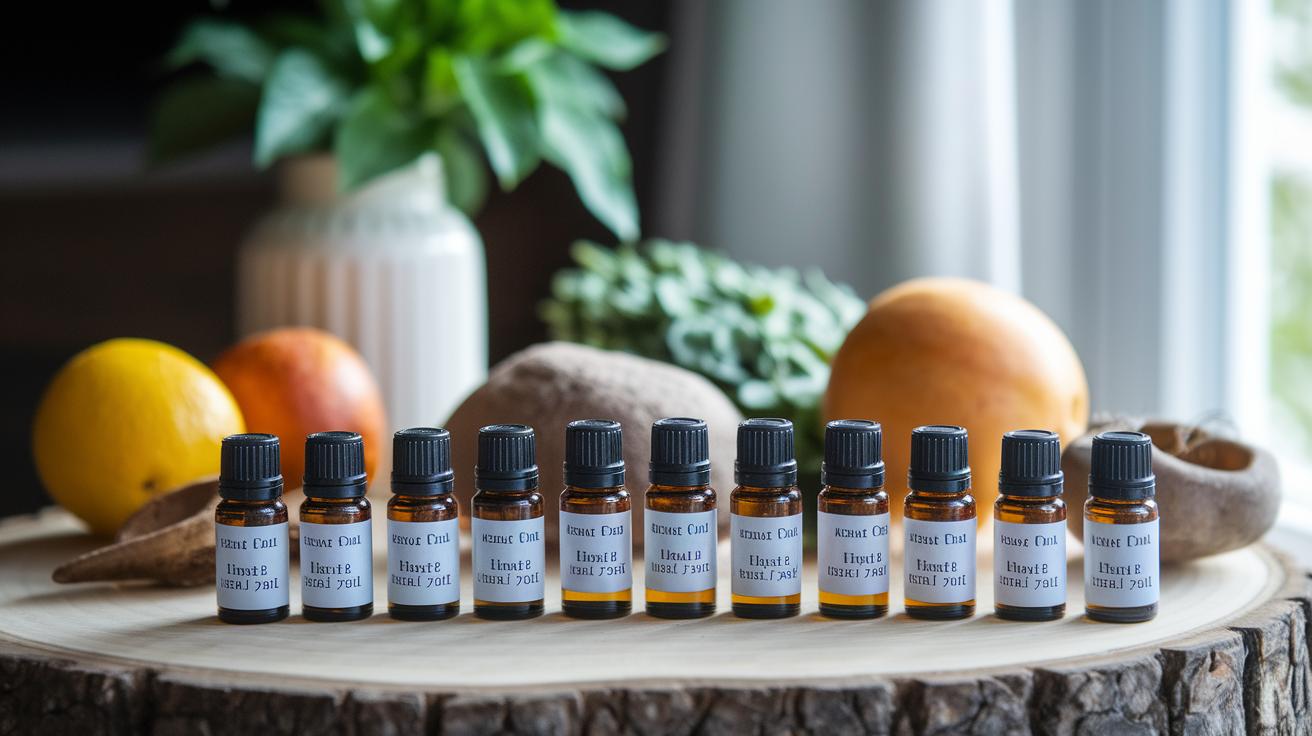
Mixing essential oils (pure plant extracts) on your skin should feel soothing, never harsh. Have you ever tried a blend and felt a sharp tingle? Let’s tune those scents just right. Think of it like turning a speaker down until the music is soft and clear.
Here are some gentle guidelines for common blends:
- Facial serum: 6 drops EO + 30 mL carrier oil (~2% dilution)
- Body oil: 24 drops EO + 60 mL carrier oil (~2% dilution)
- Sensitive skin: 3 drops EO + 30 mL carrier oil (~1% dilution)
| Blend Type | Drops of EO | Carrier Oil (mL) | Approx. Dilution |
|---|---|---|---|
| Facial Serum | 6 | 30 | 2% |
| Body Oil | 24 | 60 | 2% |
| Sensitive Skin | 3 | 30 | 1% |
Some skin types need extra care. Older adults and toddlers often do better at 0.5–1% dilution. Always measure with care and stir slowly, like crafting a tiny spa ritual in your home.
Carrier oils matter as much as dilution. Here’s a quick look:
• Sweet Almond oil feels rich and nourishing.
• Grapeseed oil is light, absorbs fast and won’t clog pores.
• Fractionated Coconut oil sinks in quickly, leaving skin soft.
• Jojoba oil (mimics sebum) helps oily skin find balance.
• Rosehip and Avocado oils give extra hydration for dry or mature skin.
In truth, a well-blended serum feels like satin on your skin. It helps essential oils deliver their benefits safely and gently. For a full breakdown of ratios, check Organic Aromas’ essential oil dilution chart. Breathe. Relax. Enjoy.
How to Perform a Patch Test for Skin-Safe Essential Oils
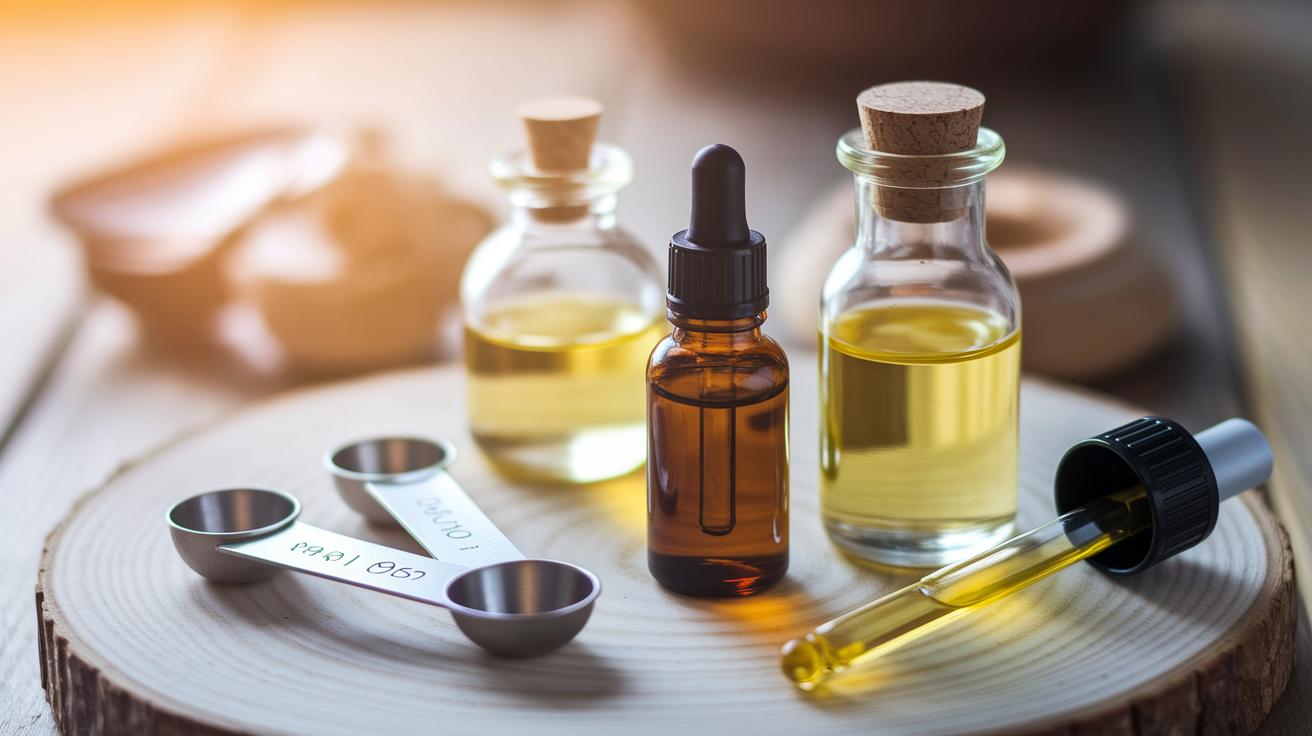
Before you let a soft mist of essential oils drift over your skin, pause for a quick patch test. It just takes a few minutes, and helps you catch any surprise irritation before it spreads.
- Mix one drop of essential oil with four drops of a pH-neutral carrier oil (a gentle oil like jojoba or grapeseed that helps dilute the scent).
- Use a simple ratio or a dilution calculator to keep things accurate.
- Dab a tiny bit of the blend on the inner forearm or right behind your ear, spots that’re easy to hide if they flare up.
- Cover with a small bandage or plaster to keep it in place.
- Wait 24 hours. Notice any redness, itching, swelling or warm spots? That means it’s not a match.
- If you’re testing a citrus oil (which can be phototoxic), give it up to 48 hours to show its true colors.
Feel a little heat or see pink? Gently wipe it off and skip that blend. No reaction? Your skin is ready for a calming, soothing experience. Breathe. Enjoy.
Safety Precautions and Contraindications for Skin-Safe Essential Oils
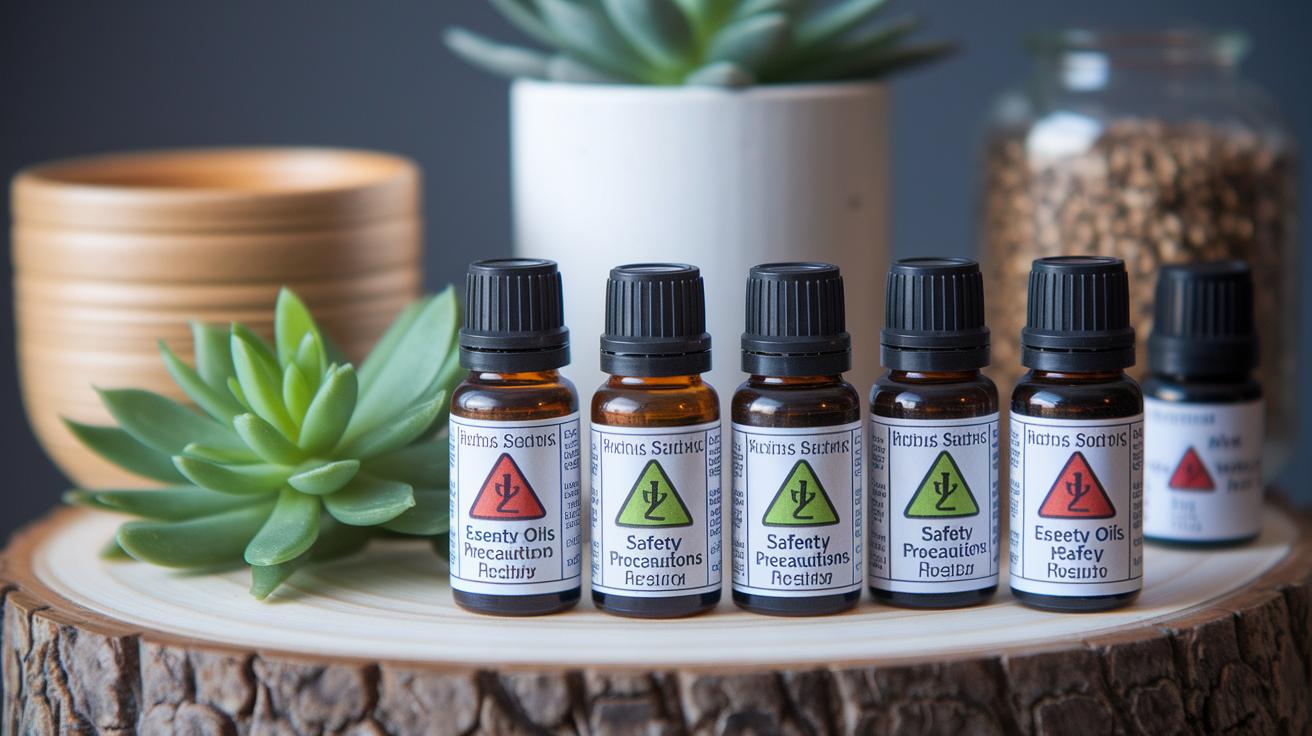
At Organic Aromas, we’re all about skin-loving care. Have you ever felt a sudden sting from pure essential oil on your skin? That’s why you always mix every essential oil with a carrier oil (a mild plant oil that helps spread scent and protect skin). Um, you know, it’s just a tiny step that keeps irritation away.
- Never apply neat (undiluted) essential oils directly to skin or near mucous membranes
- Avoid contact with eyes, inner ears, lips, and broken or irritated skin
- Phototoxic oils like bergamot, lemon, and grapefruit need 12–24 hours away from sun exposure
- Limit most oils to two topical uses a day
- If you’re pregnant, nursing, or caring for a child under seven, chat with a healthcare pro first
- Stop use if you see redness, rash, burning, or any discomfort
Even a gentle mist from a Raindrop® diffuser or our Mobile-Mini 2.0 can feel warm on extra-sensitive skin. If you notice any pink or a slight tingle, just wipe the area with a soft cloth and mild soap. Then take a deep breath. Relax. You’ve earned it.
DIY Skin-Safe Essential Oil Blends and Serums for Common Concerns

Mixing your own serum can feel like a mini spa ritual. Grab a dropper bottle and watch how simple ingredients bring a soothing aroma and gentle care. Ready?
Dry Skin Serum
This blend uses chamomile oil and rose absolutes for deep hydration and calm.
- 5 drops Chamomile oil to calm redness
- 3 drops Rose geranium oil to balance skin’s natural oils
- 1 drop Rose absolute oil for deep hydration
- 30 mL Sweet almond oil (carrier oil that dilutes essential oils)
Shake gently and smooth onto damp skin each night. The soft floral scent ripples through the air as your skin drinks it in.
Acne-Clearing Tonic
Here’s a fresh tonic to refresh your skin without stripping it.
- 5 drops Tea tree oil to clear pores
- 5 drops Lavender oil to soothe irritation
- 2 drops Lemongrass oil for gentle tightening
- 2 drops Lemon oil (bergapten-free) to brighten
- 30 mL Jojoba oil (carrier oil that won’t clog pores)
After you cleanse, dab onto blemishes with a cotton swab. You’ll feel a cool, clean finish.
Mature Skin Rejuvenation
Think of this as a nightly ritual to soften lines and boost firmness.
- 6 drops Palmarosa oil to support cell renewal
- 2 drops Rose absolute oil to soften fine lines
- 2 drops Frankincense oil to lift and firm
- 30 mL Rosehip oil (carrier oil rich in vitamins)
Gently pat onto clean skin before moisturizer. Over time you’ll notice a brighter, more radiant glow.
Scar & Pigmentation Mix
Fade spots and even out tone with this nurturing blend.
- 2 drops Ylang ylang oil to balance skin tone
- 2 drops Lavender oil to help repair
- 1–2 drops Turmeric oil to refine texture
- 30 mL Evening primrose oil (carrier oil full of nutrients)
Massage into scars or dark spots twice a day. Texture softens and spots look lighter.
Always label each bottle with the blend name and date. Then tuck them into a cool, dark spot. These non-irritating blends are easy to tweak based on your skin’s needs.
For extra tips on professional techniques, see spa aromatherapy benefits. Breathe in each aroma as your skin soaks up natural care.
Proper Storage and Quality Standards for Skin-Safe Essential Oils
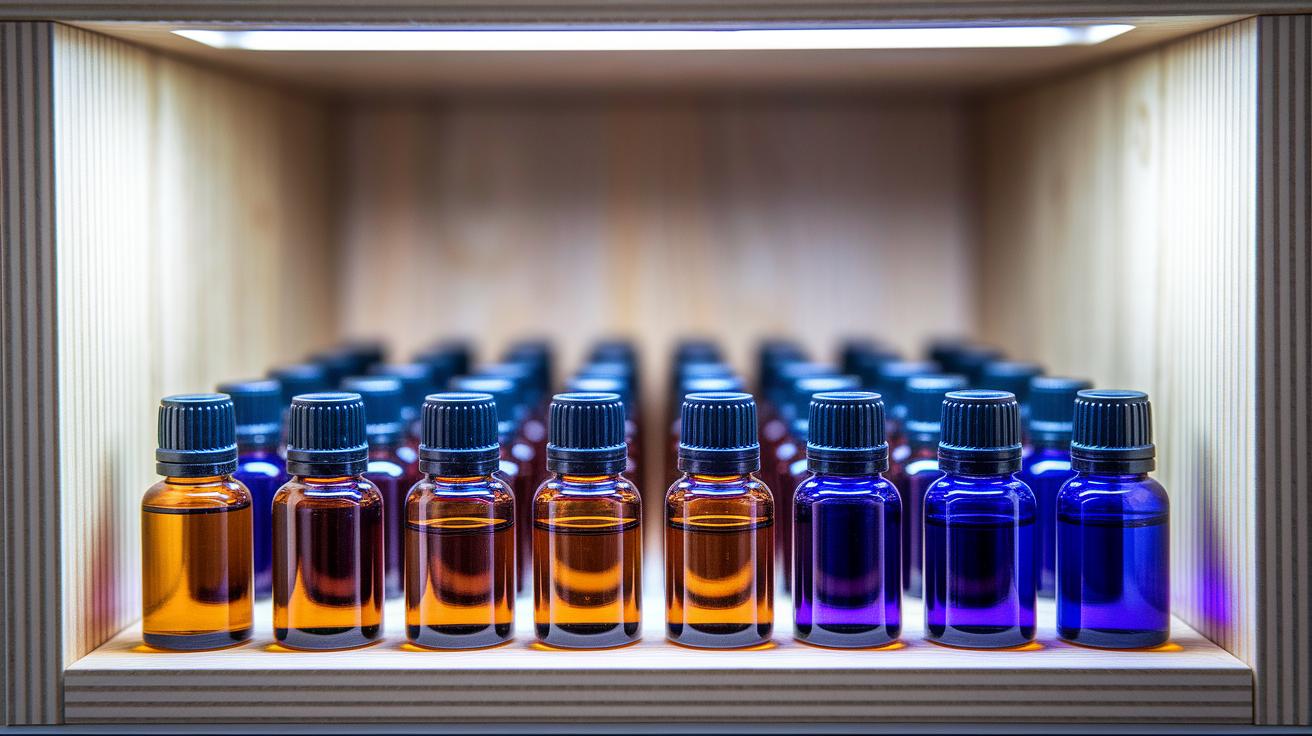
Have you felt how a ray of sun can warm a glass bottle until the scent fades? Light and heat change the natural oils in your blends. That’s why we store Organic Aromas essential oils in amber or cobalt glass.
Find a cool, dark spot between 59 and 77°F (15–25°C). Avoid humid zones like near a steamy shower. And don’t let bottles sit by a sunny windowsill or radiator.
Seal each bottle tight with an airtight cap or choose nitrogen-flushed packaging (that’s when the air inside is swapped with nitrogen). It keeps oxygen out and can stretch shelf life to up to three years. We also add vitamin E (it slows oxidation, which is when tiny oil particles break down). Um, it really makes a difference.
Every batch gets a quality check. We review GC-MS reports (that’s a gas chromatography–mass spectrometry test checking purity) and independent lab safety results. Then we log lot numbers so you can match each bottle with its safety data sheet.
Dark glass gives built-in UV protection, shielding your oils from harmful rays and preserving their aroma and power.
Freshness is everything.
Simple storage checklist:
- Bottle: amber or cobalt glass
- Temperature: 59–77°F (15–25°C)
- Placement: cool, dry, away from steam and heat sources
- Seals: airtight or nitrogen-flushed
- Antioxidant: vitamin E added
- Quality: GC-MS testing, lab safety reports, lot tracking
Final Words
We explored top skin-safe essential oils for every skin type and their key benefits, then learned safe dilution ratios and patch test steps.
You saw must-know safety tips and simple DIY blends for glow, calm, or clarity.
Now you’ve got the know-how to store and choose pure oils, and you can mix your own serums for dry, acne-prone, or mature skin. I guess it’s only a few drops away.
Breathe, blend, and enjoy.
Here’s to moments of spa-like calm and that radiant glow with skin-safe essential oils.
FAQ
Which essential oils are safe on skin?
The essential oils safe on skin include lavender, chamomile, rose, frankincense, tea tree, neroli, and geranium, each offering gentle, skin-soothing benefits when diluted to around 1–2%.
Which essential oils should you avoid in skincare?
Avoid undiluted cinnamon, clove, oregano and phototoxic citrus oils like bergamot and grapefruit before sun exposure because they can irritate or burn skin.
What is the 30/50/20 rule for essential oils?
The 30/50/20 rule recommends a blend of 30% essential oils, 50% carrier oil, and 20% water or hydrosol to balance potency, absorption and dilution for safer use.
What is the safest oil to use on your skin?
Jojoba oil is the safest oil to use on your skin because it mimics your skin’s natural sebum, absorbs easily and rarely clogs pores, making it ideal for most skin types.
What are the best essential oils for skin aging?
The best essential oils for skin aging include frankincense for cell renewal, rose and jasmine absolutes for hydration, palmarosa for firmness and clary sage to soften fine lines.
Which essential oils and fragrance oils can I use safely in lotions, soaps, and body butters?
Safe choices include lavender, chamomile, sandalwood and vanilla, each used below 2% dilution to keep blends gentle and skin-friendly.
Where can I find skin-safe essential oils near me?
You can find skin-safe essential oils at Walmart’s wellness aisle, health food stores, farmers markets or online communities like Reddit’s aromatherapy groups—just look for organic, purity-tested bottles.

